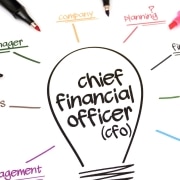SaaS Startup Financial Fails and How to Avoid Them
Over the last decade, software-as-a-service (SaaS) has exploded as companies have flocked to subscription and cloud-based services for their software needs. While the growth of the SaaS market has lowered barriers to entry, it has also created opportunities for entry. This presents a double-edged sword: the SaaS sector provides you the opportunity of founding a lucrative company but it also poses the threat of that company failing. Failures are all too common in the industry and you can’t afford to make mistakes that can sink your company. Here are a few of the most frequent financial fails that SaaS startups commit.

5 SaaS Startup Fails You Can Avoid
1. Cash Flow
When launching a product, you want to make a splash. But making a splash comes at a cost, which can include overspending on branding, marketing, offices, and other expenses. These types of overspends lead to cash flow problems for SaaS startups. The biggest splash you can make is with a good product. As a result, your money is best spent on product development and design until you have a viable product.
Beyond this early phase, managing cash flow is important so that you don’t run out of money. This requires sound accounting practices and planning, including adequately forecasting cash flow needs for each stage of growth. Keeping track of costs should be straightforward and accurate. But projecting sales is where companies can be inaccurate and fail to bring in the revenue necessary to keep operations running. Make sure to maintain accurate financial projections.
2. Having More Churn Than Growth
In a subscription-based industry, churn rate is a key metric: it is the attrition rate or the number of customers you are losing. In SaaS, this means customers who either cancel or do not renew their subscription. Churn will be inevitable no matter how good your product is – customer wants and needs change over time and you can’t always respond to them. But when churn is higher than growth, your company is failing.
Plan for some churn and don’t underestimate it. But focus on keeping your churn rate low by improving your product(s) and services(s) to retain as many customers as you can. You can also assess your pricing model and the competitive market to make sure you’re not overcharging.
3. Your Product Isn’t Market Ready When you Go to Market
Building a successful SaaS company involves having a viable and workable product that has a market. Basically, there must be a market need and your product must address that need. Even if you have a great pricing structure your product can be sunk by poor user experience, technical issues, lack of customer support and documentation if your product has a learning curve, and so on. If you try to book demos or close deals for products that aren’t quite ready, you can expect low adoption rates, high customer acquisition costs, and high churn rates.
The old adage that you never get a second chance to make a first impression stands. The customers who don’t adopt or are part of the churn may not come back even after you’ve worked out the glitches, given that SaaS is a competitive space and they will have moved on to your competitors. Ultimately, you need to do product testing, fix bugs, and make sure you have an intuitive and user-friendly product before you go to market.
4. Not Having the Right Pricing Structure
5. Marketing Spend
Because marketing involves a trial and error process, overspending in initial marketing efforts is a major reason. Marketing involves knowing the market for your product, which can involve trial and error. Before you start spending on marketing efforts, you need to define your target audience, your goals, and your key performance indicators so that you aren’t blowing the budget at the start of your marketing efforts. Be sure to conduct market analysis and have a set marketing strategy before you begin. This will help you to maximize ad spend through targeted efforts, rather than the old spray and pray approach to marketing. Similarly, it is possible to underspend or not assign an adequate marketing budget when first launching. Finally, once you have your marketing up and running, you need to conduct marketing audits to see where your efforts are or are not working to better allocate your money and effort.

NOVAA’s Fractional CFO Services for SaaS Startups
Poor management is another fail for SaaS startups. Many of the above fails can be avoided simply with an experienced management team, including a CFO who can assess the financial status of your company, offer ways of improving operations, and check to see that everyone follows and tracks these improvements.
NOVAA offers experienced fractional CFO services for SaaS companies to chart out a path to growth and profitability while avoiding the common SaaS startup fails mentioned above. For our fractional CFO clients, we have a 10 step growth strategy that plots out the full development of your company. Using the latest analytics software, we sit down with you to look at Key Performance Indicators (KPIs) and historical data in relation to your business goals and industry standards to see if you’re accomplishing the necessary goals to become a profitable company. We also evaluate the effectiveness of KPIs as your business grows and continuously analyze them to implement necessary changes in your business operations and evaluation metrics. We also conduct cash flow planning for 6 or 9-month periods at a time so that you can keep your company operating or plan financing rounds and loans to fill in the gaps for any shortfalls. Finally, we conduct quarterly audits to see whether your company is meeting its goals, as well as discovering where goals or operations need to be tweaked.
For more information on our CFO services and how we can help your SaaS startup, book a consultation.








